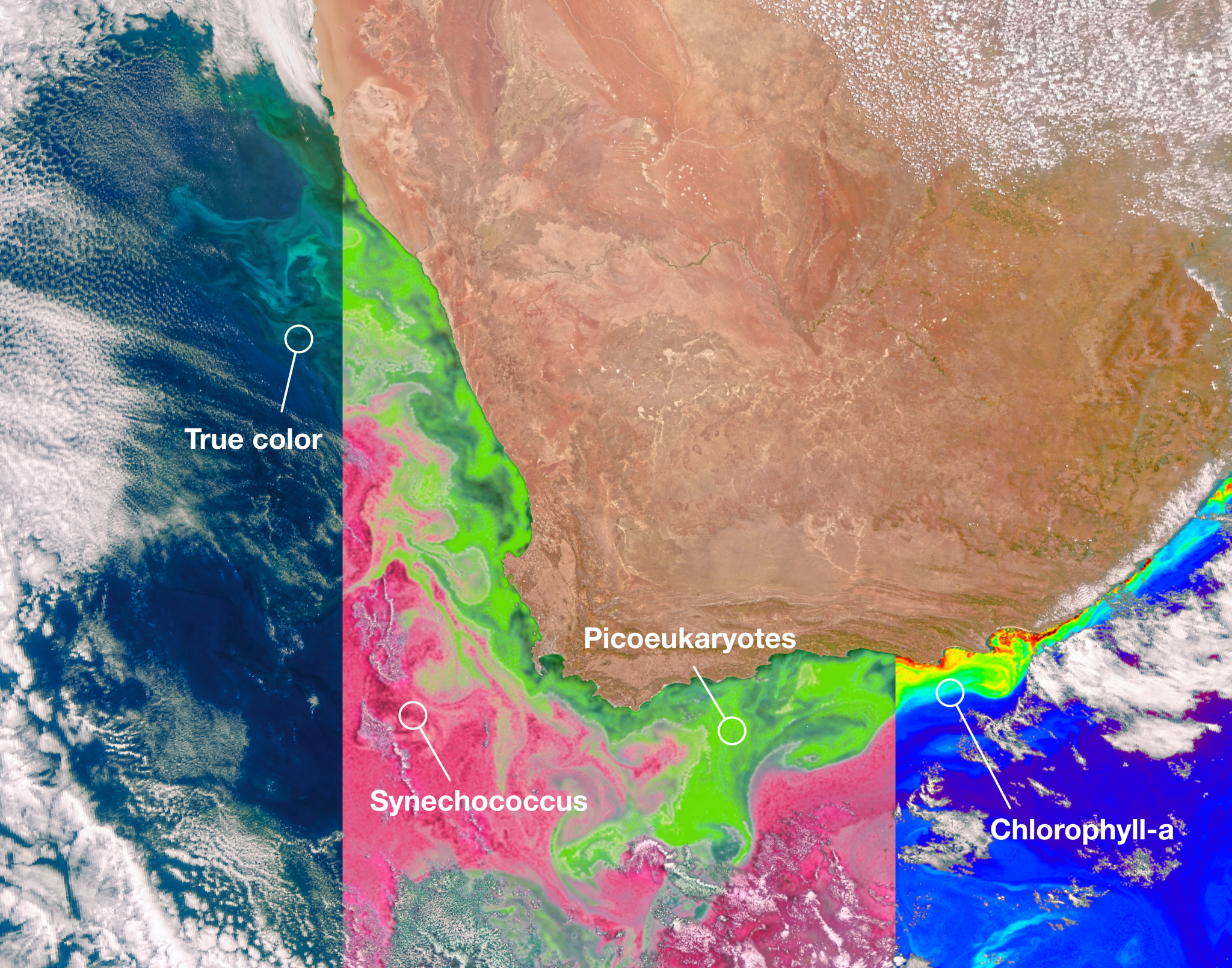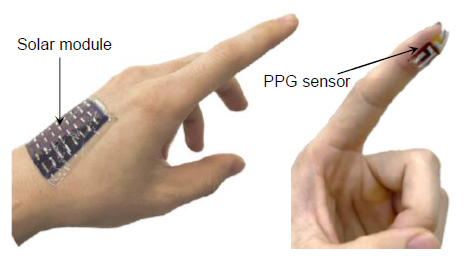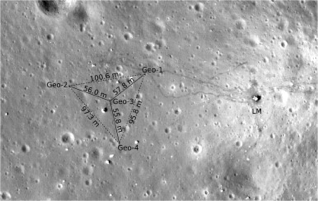2024-04-11 NASA
 NASA’s PACE satellite’s Ocean Color Instrument (OCI) detects light across a hyperspectral range, which gives scientists new information to differentiate communities of phytoplankton – a unique ability of NASA’s newest Earth-observing satellite. This first image released from OCI identifies two different communities of these microscopic marine organisms in the ocean off the coast of South Africa on Feb. 28, 2024. The central panel of this image shows Synechococcus in pink and picoeukaryotes in green. The left panel of this image shows a natural color view of the ocean, and the right panel displays the concentration of chlorophyll-a, a photosynthetic pigment used to identify the presence of phytoplankton. Credit: NASA
NASA’s PACE satellite’s Ocean Color Instrument (OCI) detects light across a hyperspectral range, which gives scientists new information to differentiate communities of phytoplankton – a unique ability of NASA’s newest Earth-observing satellite. This first image released from OCI identifies two different communities of these microscopic marine organisms in the ocean off the coast of South Africa on Feb. 28, 2024. The central panel of this image shows Synechococcus in pink and picoeukaryotes in green. The left panel of this image shows a natural color view of the ocean, and the right panel displays the concentration of chlorophyll-a, a photosynthetic pigment used to identify the presence of phytoplankton. Credit: NASA
NASAの新しい地球観測衛星からの科学的なデータが公開されています。このPlankton, Aerosol, Cloud, ocean Ecosystem (PACE)衛星は、海洋の健康、大気の質、気候変動の影響などに関する新たな測定値を提供し、公開されたデータは https://pace.oceansciences.org/access_pace_data.htm で利用可能です。これにより、研究者は海洋の微生物や大気中の粒子などを調査し、漁業の健康、有害藻類の発生、大気汚染、および野火の煙などの問題を理解できます。また、地球と大気が相互作用し、気候変動の影響を受ける様子も調査できます。PACEは、大気状態を研究するためのデータも収集し、そのデータは気候モデルの精度向上に役立ちます。
<関連情報>



